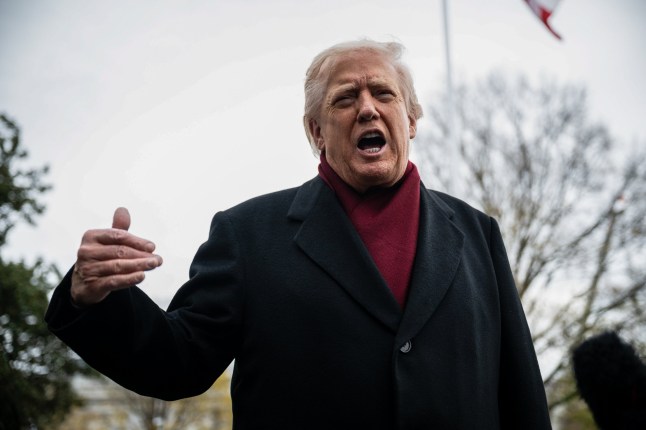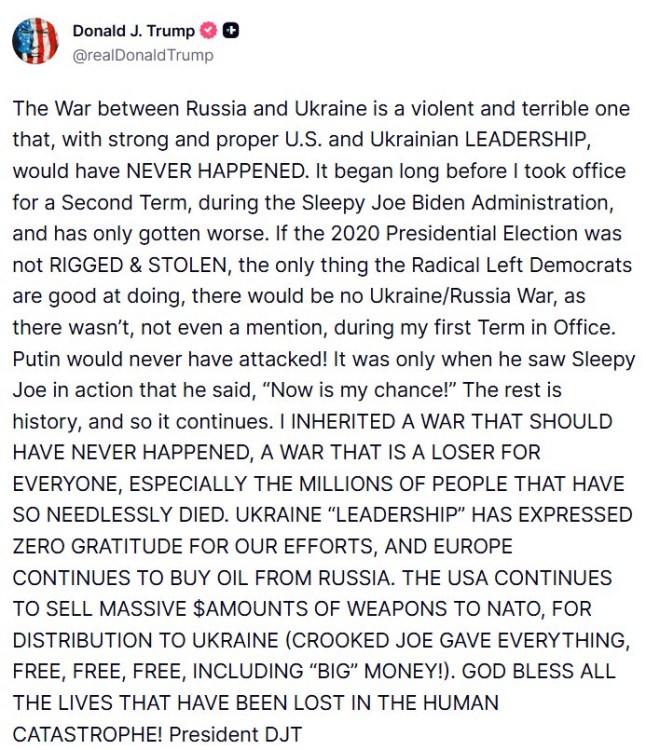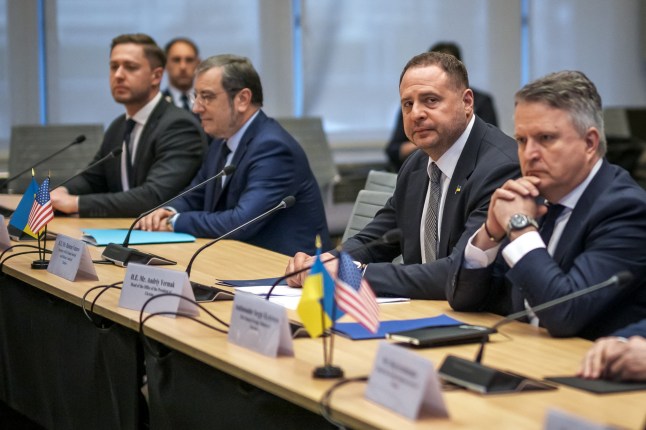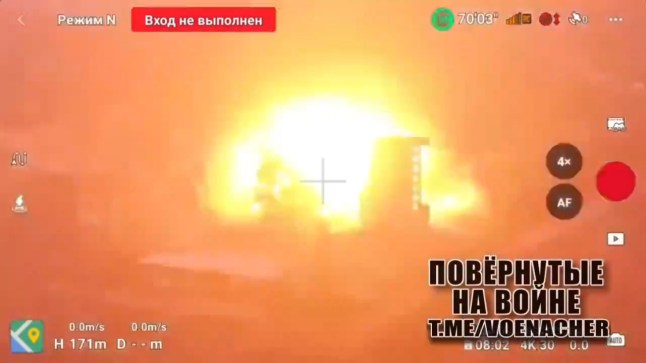
A possible peace deal between Russia and Ukraine has moved a step closer despite Donald Trump slamming Kyiv for not thanking him for his efforts to end the war.
The US President has accused Ukraine of having ‘zero gratitude’ in a post on his Truth Social profile despite talks in Geneva ‘for a lasting peace’ moving closer on Sunday.
He wrote: ‘Ukraine ‘leadership’ has expressed zero gratitude for our efforts, and Europe continues to buy oil from Russia.’
‘I inherited a war that should have never happened, a war that is a loser for everyone, especially the millions of people that have so needlessly died.’
He repeated his accusation that Vladimir Putin seized his chance to invade as ‘Sleepy Joe’ Biden was in the White House.

Volodymyr Zelensky, the Ukrainian president, said in response to the accusation he was grateful to Donald Trump ‘personally’.
‘Ukraine is grateful to the United States, to every American heart, and personally to President Trump for the assistance that – starting with the Javelins – has been saving Ukrainian lives,’ Zelensky said in a post on X.
‘We thank everyone in Europe, in the G7, and in the G20 who is helping us defend life. It is important to preserve the support.
‘It is important not to forget the main goal – to stop Russia’s war and prevent it from ever igniting again.’

It came as a widely leaked 28-point US-backed peace plan that acquiesces to many Russian demands that Zelensky has categorically rejected on dozens of occasions, including giving up large pieces of territory.
It prompted fears it was entirely drafted by the Kremlin but Secretary of State Marco Rubio denied the accusation saying it took a month of negotiation.
Rubio described the first session of talks on Sunday as ‘probably the most productive and meaningful meeting’ since the Trump administration came to power.
He hailed a ‘tremendous amount of progress; in the Geneva talks with Ukraine but cautioned ‘there are a couple of issues we need to work on.’
‘None of them are insurmountable. We just need more time than we had today. I honestly believe we’ll get there.’
‘Obviously, the Russians get a vote here,’ Rubio told reporters.
‘No matter what we came up with today, we’ll have to (take it) to the Russian side. That’s a part of this equation. They have to agree to this in order for this to work.’
Trump says he wants Ukraine to accept the plan by late next week.
The head of the Ukrainian delegation, presidential chief of staff Andrii Yermak, said good progress was taking place towards a ‘lasting peace’.

Meanwhile the war rages on. Deputy Head of the Ternopil Regional Military Administration Taras Pastukh reported that 34 people were killed in a Russian strike with two men, three women and one child still missing.
‘Of them, 33 have already been identified. For one person, forensic experts are still working to establish the identity,’ Pastukh said on Telegram.
‘During the search operations, body fragments belonging to a man were found.
‘Experts are now determining which of the two missing individuals they belong to. Although we cannot rule out that this may be yet another person, because at 8 Stus Street, those killed were not only residents of the building but also people who were passing by on their way to the shelter.
‘We have four people who died at this address but did not live in the building,’ Pastukh said.
At least 170,000 people have been killed in the Russia–Ukraine war but the real toll could be significantly higher.
Key points from Trump's Russia-Ukraine peace proposal
Ukraine’s sovereignty will be ‘confirmed’
A ‘comprehensive non-aggression agreement’ is proposed between Russia, Ukraine, and Europe to resolve ‘all ambiguities of the last 30 years.’
No NATO expansion – The plan expects that Russia will not invade neighbouring countries and that NATO will not expand further.
Ukraine would be constitutionally banned from joining NATO in future and will have a 600,000 cap on military personnel.
NATO will agree not to station forces in Ukraine
An Economic plan calls for a powerful global package to rebuild Ukraine, including using frozen Russian assets.
Crimea, Luhansk and Donetsk would be recognised as ‘de facto’ Russian territory
Kherson and Zaporizhzhia would be ‘frozen along the existing lines of conflict’ with plans for a demilitarised buffer zone in Donetsk.
A humanitarian committee would coordinate prisoner and body exchanges, return of hostages (including children), and family reunifications.
A ceasefire would come into effect immediately once both sides withdraw to agreed lines. It would be monitored by a peace council headed by Trump.